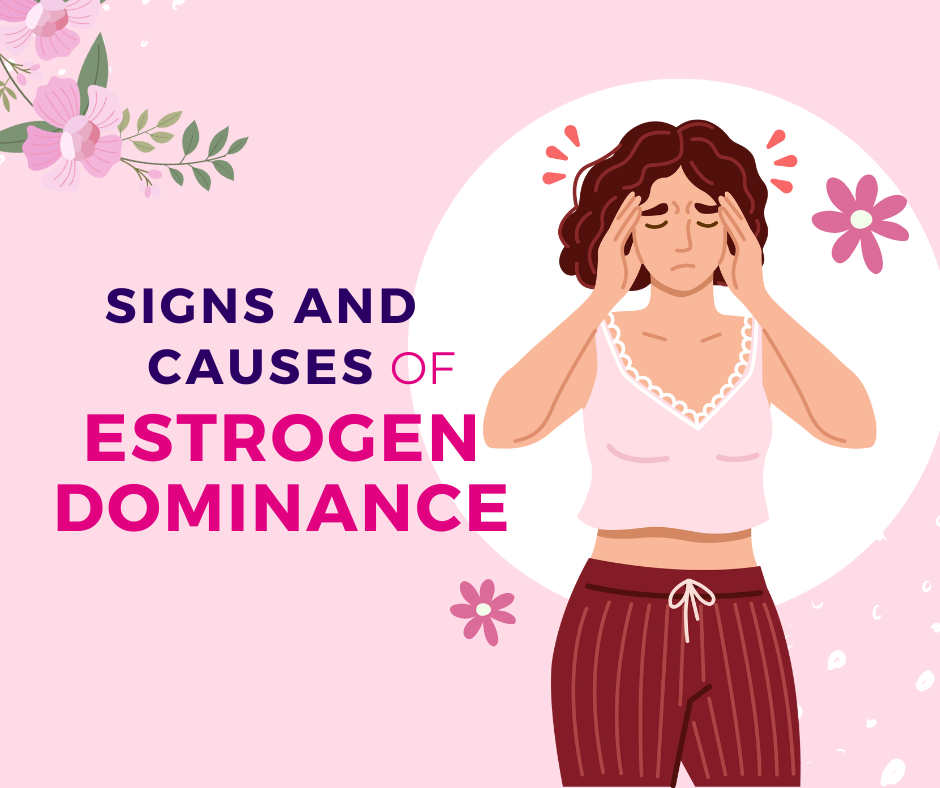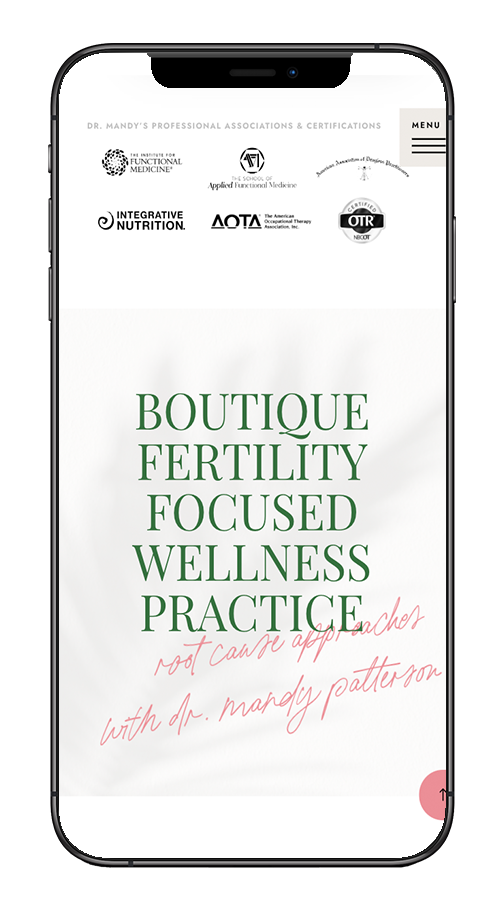I can’t tell you how many times women ask me, “could it be my hormones?”
Lots of times they’ve been told that everything checks out fine, that it’s just normal hormonal changes, or that the only option they have is to take the birth control pill.
Well…
Those things are often only partially true or not even true at all.
Lots of times when we do more thorough testing, we discover an explanation—and sometimes it’s estrogen dominance.
I’m not saying estrogen dominance is the issue for every woman, but it is commonly overlooked and something I believe more women should be aware of.
Ever heard of it?
Estrogen dominance is a pattern in the body where estrogen levels are too high in comparison to progesterone levels. It can happen because of any of these reasons:
- Increased estrogen production
- Decreased progesterone production
- Slowed estrogen elimination
- Exposure to synthetic estrogens
10 Common Signs of Estrogen Dominance
- Irregular periods
- Heavy periods
- Worsening PMS
- Bloating
- Breast tenderness
- Lumpy (fibrocystic) breasts
- Low sex drive
- Headaches
- Mood swings
- Anxiousness
Estrogen dominance is also associated with polycystic ovarian syndrome (PCOS), fibroids, endometriosis, and an increased risk of breast or uterine cancer.
Please do not take this as medical advice. The only way to know your hormonal patterns is to have testing ordered by a qualified healthcare professional.
My goal here is to increase awareness of estrogen dominance—something that is often ignored and overlooked yet can dramatically impact women’s quality of life

Estrogen dominance is a pattern in the body where estrogen levels are too high in comparison to progesterone levels. Symptoms include heavy periods and irregular periods and worsening PMS.
8 Hidden Causes of Estrogen Dominance
Estrogen dominance is a common pattern in women, where estrogen levels are high in comparison to progesterone levels.
Our hormones respond to so many aspects of our physiology that it can take some detective work to figure out the root cause of estrogen dominance.
Here are 8 potential hidden causes:
Body Fat
Our fat cells contain an enzyme called aromatase, which converts testosterone into estrogen. That means the more fat cells in the body, the more estrogen produced.
Insulin Resistance
Insulin resistance (when cells do not properly respond to insulin, leading to elevated blood sugar) increases aromatase activity, leading to increased estrogen levels.
RELATED: FUNCTIONAL APPROACH TO INFERTILITY AND ENDOMETRIOSIS
Liver Problems
The liver is the main site of estrogen metabolism. If the liver is not functioning well, estrogen will be metabolized (and therefore eliminated from the body) more slowly.
Poor Gut Health
There’s an enzyme in the gut called beta-glucuronidase that causes estrogen to recirculate into the body. Overgrowth of certain unfriendly gut bacteria boost levels of this enzyme, contributing to estrogen dominance.
Low Thyroid Function
Estrogen and thyroid hormones have an intimate relationship. High estrogen blocks the conversion of T4 to T3, and low thyroid function slows elimination of estrogen from the body. This can create a vicious cycle and worsen estrogen dominance!
Alcohol
Alcohol increases activity of the aromatase enzyme in the liver, contributing to higher estrogen levels.
Stress
Here’s a big one. Did you know that progesterone and the stress hormone cortisol are made from the same precursor hormone? That means that with more stress, we produce more cortisol and less progesterone—leaving estrogen unchecked ????
Xenoestrogens
Xenoestrogens are synthetic chemicals that mimic estrogen in the body. They can be found in plastic water bottles, grocery store receipts, cleaning products, shampoos, and lotions to name a few.
Estrogen dominance is not straightforward, but I can help you make sense of it and feel better. Are you looking to better understand YOUR hormones? Book a consult so I can help.
Schedule a free consultation here!
Mandy Patterson


















